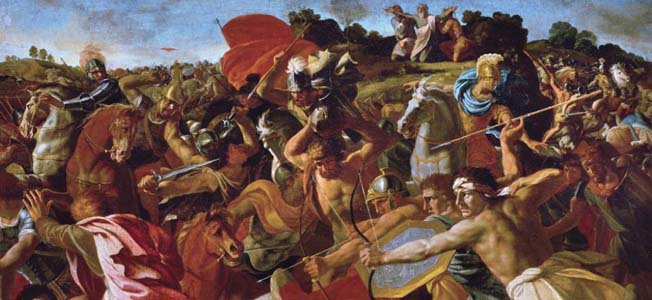
“Sha’ul summoned the people and reviewed them in T’la’im — 200,000-foot soldiers, with another 10,000 men from Y’hudah. Sha’ul arrived at the city of ‘Amalek and lay in wait in the valley.”-1 Samuel 15:4-5
Let me remind you at this time Israel was a politically divided nation.
Notice the “men from Judah” were mentioned separately.
The reason is that the tribes of Judah and Simeon banded together in the south of Israel, while Saul’s tribe Benjamin joined seven other tribes in the north.
And the loyalty of the Israelite tribes on the east side of the Jordan River was a mixed bag.
Some stayed on their own, while others leaned towards the northern or southern groups.
These alliances changed a lot over time, especially once David arrived on the scene.
So King Saul did what Samuel said and asked the Israeli army to meet at a place called Telaim (a city about 35 miles south of Hebron), which means “place of the lambs.”
Saul tallied up the number of men he had and then led them to fight the Amalekites at a place called “the city of the Amalekites.”
Obviously, that’s just a generic description and wasn’t the real name of the city.
We’re not given the actual name.
Also, we’re told Saul and his men arrived at a “city”.
However, based on the original Hebrew that’s not necessarily correct.
The original Hebrew here is IR or עיר.
Biblically speaking, a “city” usually means a big population of people surrounded by walls.
However, it can also refer to a “town” which consists of people and goods in the middle of a wide area without walls.
Anyways, let’s move on.
One final point.
Although we’re told that Saul’s army totaled 200,000 soldiers, there’s no way he marched up to the so-called city of the Amalekites with that many men.
Because his army would’ve been spotted instantly.
There isn’t a valley on the planet large enough to hide that many men.
So this was probably a smaller group of soldiers waiting and ready for battle, while the rest were nearby, ready to join quickly when the timing was right.
So what’s the takeaway for today?
The one thing that comes to mind is amazement at God’s sovereignty and how He will use Israel’s fractured political situation to achieve His end goals in His own good time.
Israel’s division into northern and southern factions may have been the result of internal fleshly strife fueled by ego, selfish desires, and ugly pride.
But at the end of the day, we’ll see it was God who was in control all along and steering history towards His divine ends.
And not just with ancient Israel.
But also with every other major war that has occurred thus far on the planet…including World War One, and World War Two.
And you had best believe, He’s controlling everything that’s happening in modern Israel’s current conflict with Hamas.
We usually don’t realize this until after the fact.
As they say, hindsight is 20/20.



Leave a Reply